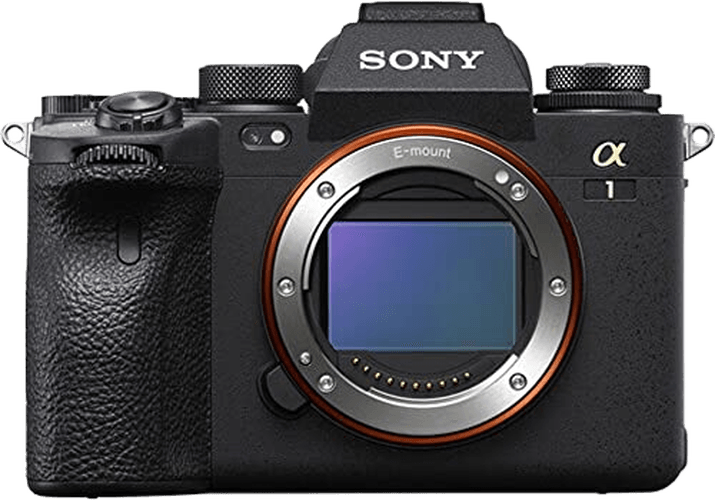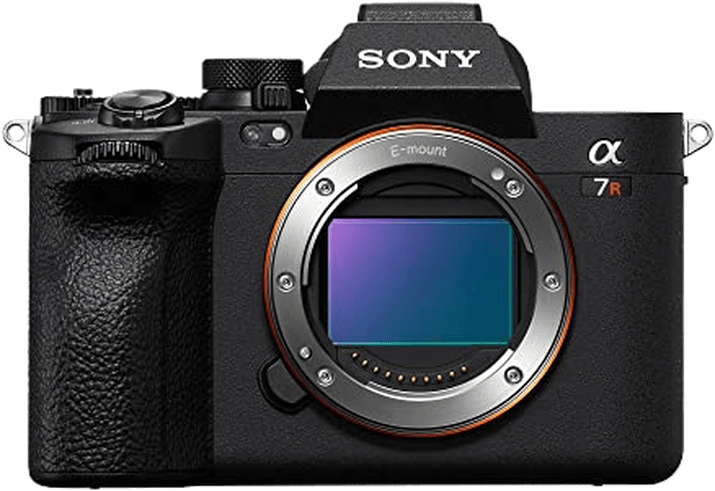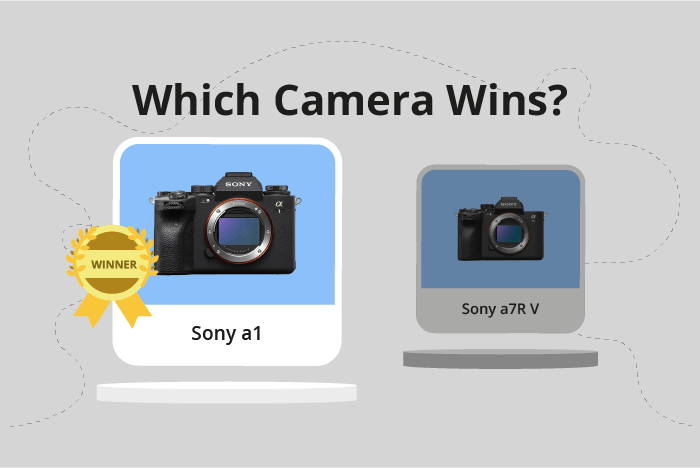Sony a1 vs a7R V Comparison
Sony a1

Sony a7R V

The Sony a1 edges out the Sony a7R V with a score of 86/100 compared to 85/100. Both cameras share similarities as mirrorless models, announced in 2021 and 2022 respectively. They have similar sizes, with the a1 measuring 129 x 97 x 81mm and the a7R V at 131 x 97 x 82mm. The a7R V is slightly lighter at 723g, while the a1 weighs 737g.
The Sony a1’s higher score reflects its superior performance and features, justifying its higher launch price of $6499 compared to the a7R V’s $3999. However, the Sony a7R V offers advantages in terms of a more recent release date and a lighter weight, making it a more budget-friendly and portable option.
Taking these factors into account, the Sony a1 stands out as the more advanced camera, but the Sony a7R V remains a strong contender for those seeking a more affordable and lightweight alternative.
Sony a1 vs a7R V Overview and Optics
The Sony a1 emerges as the winner in the optics comparison with a score of 89/100, while the Sony a7R V trails behind with a score of 85/100. Both cameras share some common specifications, such as a CMOS sensor, full-frame sensor size, Sony FE lens mount, and image stabilization. These features contribute to the overall quality and performance of both cameras.
The Sony a1 outperforms the a7R V in several aspects. Its dual Bionz XR processor offers faster image processing, contributing to its impressive shooting speed of 30 frames per second (fps). The a1 also boasts a higher DXOMARK score of 98 for its sensor, indicating superior image quality. Although the a1 has fewer megapixels (50.1) compared to the a7R V’s 61 megapixels, its faster shooting speed and better sensor performance make it a more versatile and powerful choice for photographers.
On the other hand, the Sony a7R V’s advantage lies in its higher megapixel count, which allows for greater image resolution and detail. However, its shooting speed of 10 fps is significantly slower than the a1, and its DXOMARK sensor score of 94 is lower, suggesting a slight compromise in image quality. The a7R V’s single Bionz XR processor is also less efficient compared to the a1’s dual Bionz XR.
Given these comparisons, the Sony a1 stands out as the better option in terms of optics, with its faster shooting speed, superior sensor performance, and more efficient processor. The Sony a7R V, while offering higher resolution images, falls short in other areas that contribute to overall camera performance. Therefore, photographers seeking a versatile and powerful camera should opt for the Sony a1.
Sony a1 vs a7R V Video Performance
The Sony a7R V outperforms the Sony a1 in video capabilities with a score of 100/100 compared to the Sony a1’s 86/100. Both cameras share some specifications, such as the maximum video resolution of 8K and maximum video dimensions of 7680 x 4320. They also have the same maximum video frame rate of 120fps.
The Sony a7R V is superior due to its built-in time-lapse functionality, which the Sony a1 lacks. This feature allows the a7R V to capture stunning time-lapse sequences without requiring additional accessories or software. The higher score of the a7R V reflects its improved video capabilities, including the time-lapse function that sets it apart from the Sony a1.
While the Sony a1 does not surpass the a7R V in video capabilities, it still offers impressive features with its 8K resolution, 120fps frame rate, and large video dimensions. The a1 is a capable camera for video recording, but the a7R V simply has more to offer in this category.
Considering the video capabilities of both cameras, the Sony a7R V is the clear winner with its perfect score and built-in time-lapse functionality. The Sony a1, although not the top choice in this comparison, remains a powerful camera for video recording with its high resolution and frame rate. Users seeking the best video features should opt for the Sony a7R V, while those who can forgo the time-lapse functionality may still find the Sony a1 to be a satisfactory option.
Sony a1 vs a7R V Features and Benefits
The Sony a7R V emerges as the winner in this comparison, scoring 87/100 in features, while the Sony a1 scores 83/100. Both cameras share several specifications, including touchscreen capability, flip screen functionality, WIFI, and Bluetooth connectivity. However, neither camera has GPS functionality.
The Sony a7R V outperforms the Sony a1 in terms of screen size and resolution. With a 3.2-inch screen and a resolution of 2,100,000 dots, the a7R V offers a larger and sharper display than the a1’s 3-inch screen with a resolution of 1,440,000 dots. This difference provides a better viewing experience for users, making it easier to review captured images and navigate the camera’s menus.
On the other hand, the Sony a1, despite its lower feature score, may still be preferred by some users. The camera’s specifications, such as touchscreen capability, flip screen, WIFI, and Bluetooth, are on par with the Sony a7R V. Additionally, its 83/100 feature score indicates that it is still a high-quality camera. However, it is essential to consider other aspects, such as general specifications, optics, and video performance, to determine if the a1 is the better choice for specific use cases.
In comparing the features of the Sony a1 and the Sony a7R V, the a7R V takes the lead due to its larger and higher-resolution screen. However, both cameras share many similarities, and the a1 may still be suitable for some users. Ultimately, the choice between these two cameras depends on individual preferences and requirements.
Sony a1 vs a7R V Storage and Battery
The Sony a1 and Sony a7R V tie in storage and battery performance, both scoring 73/100. They share identical specs: two memory card slots, compatibility with SD, SDHC, SDXC, and CFexpress Type A cards, a battery life of 530 shots, and the use of the NP-FZ100 battery type. Both cameras also offer USB charging capabilities.
Despite the identical scores, there are slight differences. The Sony a1 has UHS-II compatibility, potentially providing faster transfer speeds. However, this advantage is minor, as both cameras support the same memory cards and formats.
In conclusion, the Sony a1 and Sony a7R V have comparable storage and battery performance. No significant differences set them apart in this category, making them equal choices for users prioritizing storage and battery life.
Alternatives to the Sony a1 and a7R V
Are you still undecided about which camera is right for you? Have a look at these popular comparisons that feature the Sony a1 or the Sony a7R V:

